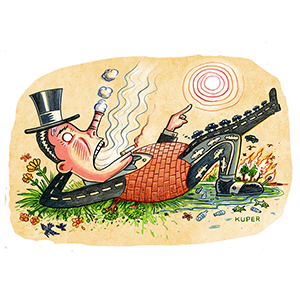Is Crystal River a nursery for baby bull sharks? We went fishing to find out.
Published in Outdoors
Stephanie Perez, an intern with the bull shark project, was chatting on the boat’s port side about what drew her into the world of shark science, when suddenly …
“We’re running, we’re running!” Andres yelled, the whiz of a fishing rod forcing everyone on the boat out of their seat.
The crew had ventured upriver toward Bagley Cove, close to King’s Bay. It was just past 11 a.m. when they hooked into the third baby bull shark of the day.
And this one was a doozy.
“111 centimeters,” yelled Isabella Pino, the second intern on the boat.
“That’s the biggest one yet!” replied Perez.
Not every bull shark the team catches gets an acoustic device, because the process to insert it requires a small incision in its belly. The sharks have to be full of energy when they reach the boat, to make sure they can swim off with strength. There was no doubt about this one, though. At a healthy 19 pounds, he checked all the boxes.
Andres cut a small, inch-long incision on the bottom of the shark and slid a cylindrical acoustic monitor through the cut. This device, Andres explained, will give scientists a granular view of the shark’s movements as soon as it returns to the water. A series of “checkpoints” are scattered around the river that will catch and record the pings coming from the shark’s monitor.
“You’re OK, buddy,” she told the shark. With the grace of a surgeon or a seamstress, Andres stitched the animal with sutures. She had been perfecting this procedure with a practice surgical kit she bought in November. This was the 10th shark surgery since.
“That looks beautiful,” she said, turning the shark back over. “I am so happy with that.”
The team watched as the shark kicked back into the murky depths of Crystal River. Each member breathed heavily as the whirlwind of another catch-and-release had come to an end.
The project has a handful of collaborators, including the nonprofit group Minorities in Shark Science, which is providing funding for the two internships (a rarity in marine science education).
The $10,000 for the project’s 15 acoustic tags, an acoustic recording device and a machine to spin shark blood for sampling came from the Fish and Wildlife Foundation of Florida, which raised the money by selling the “Protect Florida Springs” license plate.
The foundation chose to fund the research because it could reveal yet another reason why Florida’s springs systems are so crucial for life in aquatic habitats, said Michelle Ashton, a spokesperson for the group.
The research could also underscore how humans are changing natural spring flows, and how that may be detrimental to shark populations — let alone scores of other marine species relying on springs.
“These are good people doing good work,” Ashton said.
“I’m really inspired by the team doing this on their own time, out of their own quest for knowledge, their passion for sharks and for a better understanding of these ecosystems.”
Funding is still needed for the Crystal River Bull Shark Project. If you’d like to contribute to the cause, the team suggests emailing crystalriverbullsharks@gmail.com
©2024 Tampa Bay Times. Visit tampabay.com. Distributed by Tribune Content Agency, LLC.






Comments